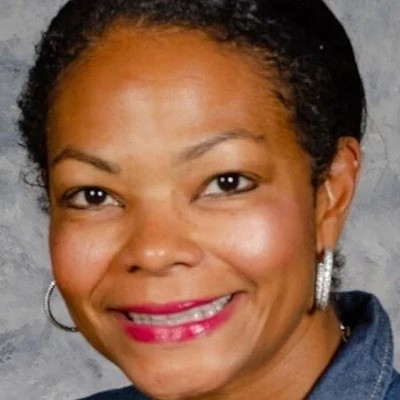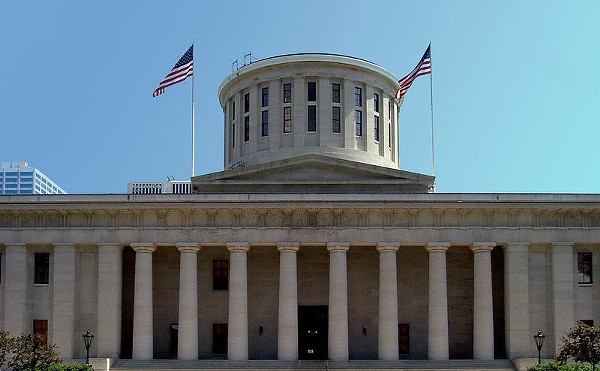After the man had gone, the clerk flipped open the phone and was shocked by what she found: On the illuminated screen was a man with a long beard, tall turban, and white flowing robe, who carried a three-foot spear slung over his shoulder. It looked like Osama bin Laden. The clerk called the FBI.
The young man was fueling his Infiniti the next day when his phone rang.
"I want to speak to Navtej Bains Singh," said a man's voice.
"Speaking," he replied.
It was the FBI's counter-terrorism task force. "We'd like to talk with you in person," the man said.
"I haven't done anything," Singh said. "Can't you give me a hint of what this is about?"
"We had a report you had a certain type of picture on your cell phone."
Singh immediately knew why the FBI was concerned. He was Sikh, part of an Indian religion whose adherents are sometimes confused with Muslims because they grow beards and wear turbans.
In the days after September 11, this had violent consequences. Four days after the terrorist attacks, a Sikh gas-station owner was shot to death in Arizona. Singh's own temple in Bedford withstood a firebombing. All told, police reported almost 180 hate crimes against Sikhs in the first two weeks after September 11.
Singh met the FBI agents at a nearby McDonald's. He brought a book containing pictures of the Sikh saint whose visage decorated his broken phone. Once he showed it to the agents, they apologized for wasting his time. "People are on edge," one of them explained.
The entire meeting took 15 minutes, but stuck with Singh like a splinter. Two years later, the pain would trigger a feud among members of Cleveland's tiny Sikh population. The dispute would pit Sikh against Sikh in fistfights and court battles. When it was over, the congregation would never be the same.
Persecuted but proud, Sikhs throughout history have taken up arms to defend their faith and country. Their fierceness in battle led the Brits to enlist Sikhs during World War II. They were also at the front lines of the Indian independence movement and were among the last to drop their weapons.
In homage to this "soldier saint" role, many Sikhs are baptized into the "Khalsa," or "pure" -- an elite body of worshipers who follow a stricter lifestyle.
Baptized Sikhs wear five items, known as the "5Ks": Kirpaan, a ceremonial dagger, symbolizing their fight against persecution; Kesh, uncut hair, which represents the perfection of God's creation; Kanga, a comb meant to keep the hair tidy; Kachera, knee-length undershorts that are a sign of chastity; and Kara, a circular steel bracelet to remind them of their link to God.
Because many Indian surnames reflect the country's rigid class structure, baptized men take the name "Singh," which means lion, and women take "Kaur," which means lioness.
Scholars describe Sikhism's origins as a reform movement, one that shed Hinduism's caste system and idol worship, but kept its philosophy of karma, reincarnation, and nirvana. Unlike Hinduism and Christianity, Sikhs have no religious hierarchy or formal clergy. Each sangat, or community of believers, derives its own set of policies from Sikhism's holy book, the Guru Granth Sahib.
Sikhism is the fifth-largest religion in the world. It has about 20 million followers, a majority of whom live in Punjab, a western state in India. About 300,000 Sikhs live in America.
Of them, an estimated 2,500 call Northeast Ohio home. They are divided between two Sikh temples in Bedford and Richfield. They live in such suburbs as Westlake, Parma, Maple Heights, and Solon, and work as pharmacists, veterinarians, engineers, and doctors. While many Sikhs are recognizable by their turbans and beards, others cut their hair, either because their jobs require it or for fear of discrimination. They're known as "cut" Sikhs.
Even some turbaned Sikhs marvel at Navtej Singh's conviction. The Cleveland State University engineering graduate, now 25, chose to undergo baptism just months after the September 11 terrorist attacks. Wearing a navy blue turban and with a black beard that scrolls down to his chest, he jokes that if he had a penny for every time someone called him Osama bin Laden, he would be able to buy his very own temple.
Singh organized a Sikh youth group within weeks of the hijackings -- to counter the mounting prejudice against Sikh Americans. They went to local print and television news outlets to make their case. "We're getting the finger. We're getting, 'Go back to your land!'" Singh told The Plain Dealer just days after the attacks. "I was born in Cleveland. I'm the biggest Browns fan in the city."
He wanted to tell Americans why Sikhs grow beards and wear turbans. But he also wanted to take his message to fellow Sikhs. At the Bedford temple where he sometimes worshiped, the president of the executive committee, also responsible for public relations, was a cut Sikh. In fact, several temple leaders had long ago shed the traditional Sikh look.
"They look like the hijackers," Singh says bitterly of the cut Sikhs in charge of the temple. "But the people in turbans get dissed all the time."
Navtej Singh viewed temple leaders who cut their hair as sellouts. He thought those who were the public face of local Sikhs should at least display the beard and turban that the religion prescribed. By December 2003, he was finally ready to call them out.
But there was a problem: Singh was barred from addressing them, because he wasn't a founding member of the temple. That rule had resulted from a long-ago fracture in Northeast Ohio's Sikh community.
In 1975, a small nexus of 30 local Sikh families founded the Guru Nanak Foundation of Greater Cleveland. They met in each other's homes and rented rooms to cook, pray, and eat together. Within two years, they moved into an old church and opened the state's first Gurdwara, or temple, on Cleveland's West Side. Over the next 10 years, the Gurdwara flourished.
By 1986, it was time to expand. But members couldn't agree on location -- one side wanted to keep searching for a more central spot, while the other just wanted to get it done quickly. The disagreement led to a contentious split. One group sold the old church and used the money to buy another church in Richfield. The other went its own way and created a separate Sikh organization, called the Guru Gobind Singh Sikh Society.
The breakaway Sikhs met in rented halls for the next two years. They soon raised enough money to buy a former Masonic temple in Bedford.
Still smarting over the Richfield deal, the temple founders wanted to ensure that they'd never again lose their Gurdwara. They wrote a constitution decreeing that only founders and their families would be considered "members" who were eligible for leadership posts. The rest of the congregation could attend meetings and speak their minds, but would never hold positions of authority.
The congregation didn't automatically submit to such limitations. In a matter of years, a few newcomers were asking why they were banned from holding a political stake in the workings of the temple. To halt the questions, some founders passed a controversial amendment in 2000 that completely excluded nonfounders from temple proceedings. The issue of membership had quietly festered among Bedford Sikhs ever since.
Which is why Singh would need a founding member to make his case. An old family friend volunteered for the job.
Sukhjit Singh Chauhan, 30, had recently been baptized. A CSU business major with a thick black beard woven under his chin, Chauhan shared Singh's vision. "Our issue was, this is about the Sikh identity," Chauhan says. He agreed to raise their concerns at the next founders' meeting.
Chauhan woke up calm and confident that Sunday. He climbed the Gurdwara's two flights of stairs and sat cross-legged on the floor of the sanctuary, a sprawling space decorated with saffron-toned posters bearing holy verses written in Punjabi. About 100 founding members filled the room.
After the meeting began, the founders reappointed the temple's five-member executive committee to a second term. The committee would decide who would fill the various offices, including that of president, which handles much of the Gurdwara's public outreach.
Three of the committee members had cut their hair, including the president, Gursharan Singh Gill. When it came time for public comment, Chauhan suggested that Gill switch roles with one of the two turbaned Sikhs on the committee, so that the Gurdwara's public face would better resemble that of traditional Sikhism.
Chauhan's proposal was not well received.
"What? We're not Sikh now?" a cut Sikh in the audience asked.
"What is the definition of a Sikh?" asked another.
"Are we not Sikh?" a third interjected.
When Chauhan finished, Gill retook the stage to quiet the crowd. Urging calm, he said that he respectfully disagreed with Chauhan, but added that everyone was entitled to his opinion.
The din died down, but the matter was hardly resolved. In the first-floor hall, small groups of men huddled to talk after the meeting. At that moment, Chauhan and Singh knew they had sparked a fire. But they had no idea how volatile it would become.
In the weeks that followed, the congregation divided into two warring factions.
As president of the executive committee, Gursharan Singh Gill represented the old guard. A tall, handsome 40-year-old who works as a shipping supervisor, Gill is a founding member, whose father is the patriarch of one of the Gurdwara's largest families. Gill had cut his hair at 16, just after arriving in America. He saw himself as a moderate and bristled at the fundamentalist view of his opponents.
"They're considering us second-class citizens," Gill says. "Just because we're cut doesn't mean we're not Sikh."
A man named Kamaljit Singh Janda stepped forward to lead the opposition. Janda, a ruddy 50-year-old who is related to Gill by marriage, owns several rental properties and gas stations, and wears a thick beard and turban. As the vice president of the executive committee, Janda had long felt that the Gurdwara's closed membership policy violated the spirit of Sikhism, which values equality and democracy.
"In Sikhism, membership should be given to everybody," Janda says. "But now we're seeing that . . . it's totally different. They want to have the hold."
A sign of the growing dissension came on January 14, 2004 -- a month after Chauhan spoke and the eve of the day the executive committee was to elect its officers. That night, Gill's father called police and reported that someone had called in a death threat.
"Mr. Gill got a phone call from an unknown person who threatened to shoot and kill him if he attended services on Saturday or Sunday," reads the incident report.
If conflict were brewing, the events of the next day would do nothing to quash it. Gill suggested that the executive committee positions remain as they were -- disregarding Chauhan's objection that a cut Sikh shouldn't lead. Janda and the other turbaned committee member stormed out in disbelief.
There was nothing they could have done anyway. Gill had two allies on the board, including his cousin, Kulbir Singh Gill, so he was a shoo-in. With the other two members gone, Gill was reappointed president by a vote of three to zero.
The following Sunday, the opposition group made it clear that it wouldn't accept the election results. When Gill stood to address the congregation, Janda and 20 others walked out in protest.
The scene would be repeated several times in the following weeks, with the ranks of protesters swelling to 60.
To Gill, it was a disruptive end run around temple rules. "He wanted a position of power he didn't get," Gill says of Janda. "He felt that's it, he's going to change the whole system."
Indeed, many worshipers came to believe that the dispute had less to do with turbans and beards than with an old-fashioned power struggle. The Gill family was among the largest in the congregation, with its numbers climbing past 40 members. "[Janda's side] thought that the Gills were trying to take control of the temple," says Onkar Mahal, a founder who says he's caught in the middle. With two Gills on the executive committee, the family's grip seemed to be tightening.
The brewing controversy finally erupted in violence in May 2004.
One day, shortly after services ended, Janda wanted to address the congregation in the prayer hall. Instead, a shouting match started over who deserved to control the temple.
Azaadjeet Singh Khaira, an Asian American newspaper publisher who had recently grown a beard and joined Janda, started snapping photos. Suddenly, someone hit him in the back and dragged him out of the sanctuary, he says. "They attacked me. I couldn't believe it."
Someone called 911. "Send the police! Send the police!" yelled the frantic voice. Five officers responded and found a large crowd in a heated argument. The police broke up the fracas and charged a man named Amrik Singh Dhillon with theft, for allegedly yanking Khaira's camera off his neck. (Dhillon did not return calls requesting comment.)
Within days, Khaira published an article calling the three cut executive members an "unholy troika" and accusing them of "having no understanding of Sikhism" and of filing false police reports for claiming the Gurdwara as their property. A month later, Gill's side slapped a libel suit against Khaira, which was later dismissed.
Bedford authorities were growing concerned about the mounting tensions within the temple. Police Chief Greg Duber met with the two factions and told them to settle their differences peacefully or go to court.
Gill was first to act. He and several other founding members wrote a letter to Navtej Singh, Khaira, and a third Janda supporter, Baltek Randhawa, banning them from the Gurdwara.
"You are not a member of the Guru Gobind Singh Sikh Society," Gill wrote. "Receiving religious services is a courtesy extended to you, not a privilege."
Randhawa was irate. He located Gill inside the temple and tore up a copy of the letter in front of him, Gill says. Randhawa then pulled out a second copy, crumpled it, and threw it in Gill's face.
Meanwhile, Janda was busy writing a letter of his own. Gill soon received a two-page dispatch from "The Sikh Community of Greater Cleveland." In it, Janda informed him and his two allies on the executive committee that they were suspended. Janda demanded a public apology.
"If you fail to comply," Janda wrote, "you would be declared tankhaiya (apostates)" and "an order for excommunication would be issued against you."
For the next several months, virtually every Sunday brought another skirmish. Police showed up at the temple almost as often as worshipers -- by the end of the year, they had been summoned no fewer than 11 times. It all came to a head on September 19.
That Sunday started like any other. Templegoers filed in slowly and sipped hot tea to wake up. Janda, still determined to oust the Gills, set up a few tables to register new members -- which he considered his duty as vice president. Small groups of three or four people spread out in the large, cavernous hall. The air filled with Punjabi worship music. Then it happened.
"What are you doing here? You should be at a Hindu temple," a turbaned man told a younger, cut Sikh wearing a bandanna, according to Onkar Mahal, the founding member who felt caught in the middle.
The young Sikh answered with his fists. Mahal jumped in and tried to pull the two apart, while the hall quickly erupted into pandemonium. More than a dozen men from the opposing sides duked it out. The room filled with more than 100 onlookers. Women screamed; children cried. Several adults telephoned police in hysterics. Six officers jumped into their patrol cars and immediately radioed for backup.
"Just stop it," Mahal yelled, but his plea was swallowed by the noise. "Stop! Stop!"
The fight ended before police arrived, but it shattered any pretense of peace at the temple. Khaira later claimed that his forehead had been bashed open by someone wearing brass knuckles. Manjit Singh Khuban, a Gill ally who served as secretary on the executive committee, said that his ear had been slashed. Khuban, Khaira, Khaira's wife, and one other person were taken to the hospital. Several men -- including Janda -- said that their turbans had been ripped off their heads, considered by Sikhs to be the ultimate insult.
After the near riot, Bedford officials could no longer ignore the escalating violence. City Law Director Kenneth A. Schuman sent Gill's lawyer a letter, asking that the temple's doors be shut for two weeks to allow tempers to cool.
"The City of Bedford has become increasingly alarmed about the recent problems occurring within the Sikh Temple," Schuman wrote. "[We] strongly advise you to instruct your clients to close the church . . . This issue is extremely important to the City of Bedford, as it will no longer tolerate these disruptions."
Gill reluctantly agreed to the demand. Feeling that he had no other choice -- either he could do it, or the city would do it for him -- Gill shuttered the temple and posted the city's official letter on the door.
But this quickly became a partisan issue. Janda argued that Gill had no authority to padlock the temple. The decision would have to be put to a vote by the congregation, he argued. "They think nothing of the congregation," Janda says of Gill's decision. "They're running it like a private enterprise, like a dictatorship."
In protest, Janda led his followers to the lawn of the Gurdwara that Sunday. More than 300 people began arriving around 10 a.m. on the crisp fall day. They set up a tent for the holy book, and worshipers sat on sheets and blankets for a two-hour service. Afterward, about 200 of them marched four blocks to City Hall and police headquarters, where they chanted and held signs accusing authorities of favoring Gill's camp over their own.
A Janda ally named Kunwar Karanbir Singh was particularly incensed by the temple closing. The Gurdwara housed six holy books that Sikhs believe should be ceremoniously opened each day. Not to do so was sacrilege. So Kunwar, a 38-year-old software engineer and father of two young children, launched a hunger strike. He consumed nothing but a water-and-sugar solution for 40 hours, until Gill gained the city's permission to remove the books.
Gill reopened the temple a week later. He and a few hundred worshipers returned for regular services. He also invited the city's police chief, law director, and city manager to greet the congregation. One worshiper urged templegoers to keep the peace.
Then Janda stood up to talk. "Don't put a blanket over the fire," he said, adding that there were still significant issues that needed to be resolved.
Later that week, police filed felony assault charges against two Gill supporters. Khuban, the 37-year-old secretary of the executive committee, and another man, Sanjiv K. Saini, 31, were accused of striking Virginia Singh -- the wife of Khaira, the newspaper publisher -- during the September 19 brawl. (Khuban declined to comment. Saini did not return phone calls requesting comment.)
The dispute soon moved from the temple to Cuyahoga County Court. By the first week of November, Gill and his supporters filed a formal complaint accusing Janda, Khaira, and seven others of "attempting to gain control" of the Gurdwara, "disrupting religious services and meetings," and "attempting to enroll additional members." Gill asked the judge to ratify the executive committee's actions.
Two weeks later, Janda's attorney sent a reply. In it, Janda, Khaira, and the seven other defendants claimed that "a man without long hair cannot call himself a Sikh." They called the Gills and Khuban "non-Sikhs" and apostates, and accused them of "surreptitiously" writing rules into the constitution to "promote and entrench" their control over the Sikh community.
A few weeks after the complaints were drawn up, the temple held another founders' meeting. A new executive committee was to be chosen, and lawyers for each side came to monitor events, as did five police officers and a court-appointed sheriff's deputy.
An average of about 100 founders usually attended the selection meeting, but this time, Janda made sure to invite as many nonfounders as possible. That day, about 400 people filled the sanctuary.
"Please, I'm asking you to leave the prayer house," Gill urged the nonfounders. When they didn't budge, Gill told them they could stay, but not participate. For the next hour and a half, Gill answered hostile questions, some of which accused him of taking money from the Gurdwara's coffers, which he denies.
Then it was time to choose the new committee. Gill started reading a list of nominees. Janda spoke up. He said that he had a nomination slate of 55 founders, all of whom opposed Gill. The sides were deadlocked.
Sensing the potential for violence, the sheriff's deputy dispersed the crowd. Since then, Janda and his supporters have not returned to the Gurdwara. The Cuyahoga County Court was left to interpret the vagaries of Sikh doctrine, a job for which it was hopelessly unqualified. Aware of this, Judge Richard J. McMonagle appointed Subodh Chandra, a second-generation Indian American, who is not a Sikh and who had previously served as Cleveland's law director, to help combatants find a middle ground.
The two factions met three times in the early months of 2005. Their last meeting was a marathon 14-hour Saturday session. Gill offered to allow a small number of new members to join each year, but Janda wanted all or nothing. As it approached midnight, the negotiations failed.
Now it's up to the courts to decide. A hearing is scheduled for July. Few believe that the legal system will settle the dispute. But without a central authority, the Bedford Sikhs have nowhere else to turn. Already, the two sides combined have spent at least $30,000 on lawyers' fees. Gill says that the total could surpass $100,000 if the case goes to trial.
"If these two groups cannot resolve their differences, then they're going to have to somehow find their own communities," says Nicholas Phillips, the attorney for Gill's side.
There are signs of that happening. Janda has formed his own nonprofit organization and started collecting donations. Last month, his group began holding services at a donated church basement. About 100 worshipers attend the weekly services at the Euclid Christian Church in Cleveland Heights. They sit on bedsheets and pieces of carpet spread on the cold vinyl floor of an elementary classroom.
As for Navtej Singh and Chauhan, disillusioned by both sides, they've decided to strike out on their own. They've gathered a youth group of about a dozen second-generation Sikh Americans and plan to begin holding their own religious services in each other's homes.
At the Bedford Gurdwara, there is hardly any mention of the ongoing court case. Over the last few months, templegoers have returned to find tranquillity once again. About a month ago, a new executive committee took over. At a recent service, both cut and turbaned Sikhs packed the sanctuary. Children ran up and down the stairs, and women talked among themselves. A few cut boys lounged on the couches in the foyer.
Kamaljit Ahluwalia, a turbaned Sikh in his 50s, would like to see the president and his allies on the executive committee don turbans, but says it can't be forced. "If they're not doing it, what can we make them do? We don't want to fight or anything."
Manjot Srataul, 26, hadn't been back to the temple in months because of the turmoil. He brought his newborn son for the first time in April and was pleased to find the atmosphere quiet again. "It felt comfortable," he says. "We don't care about the founding-member question. We just come here for peace and blessings."
Gill regrets that the dispute came to this. He fondly remembers the days when the congregation was united, when he considered Janda a brother.
"We were best friends," Gill says sadly. "This has ruined relationships. It has ruined friendships."












